Introduction to Italian Penicillin Soup Recipe
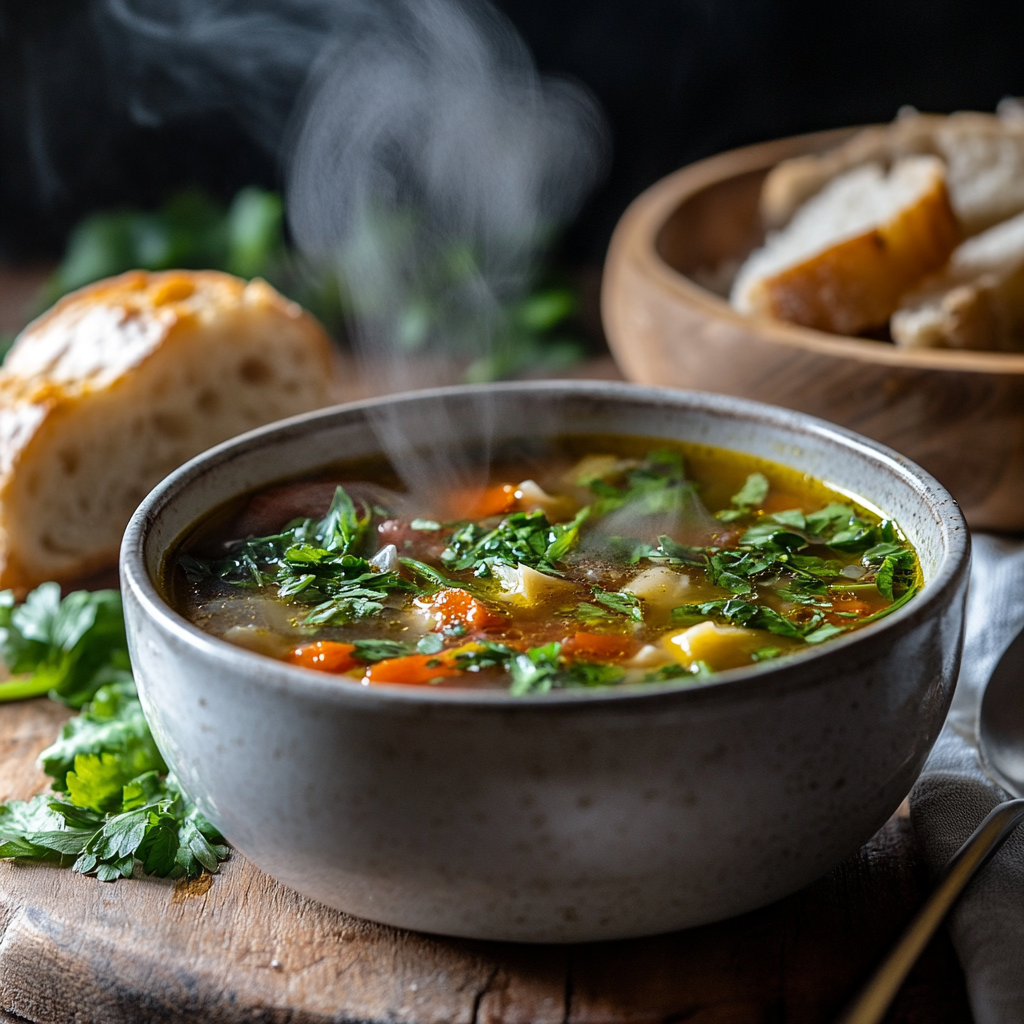
Welcome to the ultimate guide on Italian Penicillin Soup, a comforting and nourishing dish that has been a staple in Italian households for generations. This soup is more than just a meal; it’s a remedy for the soul, especially during cold and flu season. Often referred to as Italian Nonna’s Soup, it’s known for its healing properties and delicious taste. Let’s dive into the world of this magical soup and discover why it’s a must-have recipe in your culinary repertoire.
What is Italian Penicillin Soup Recipe?
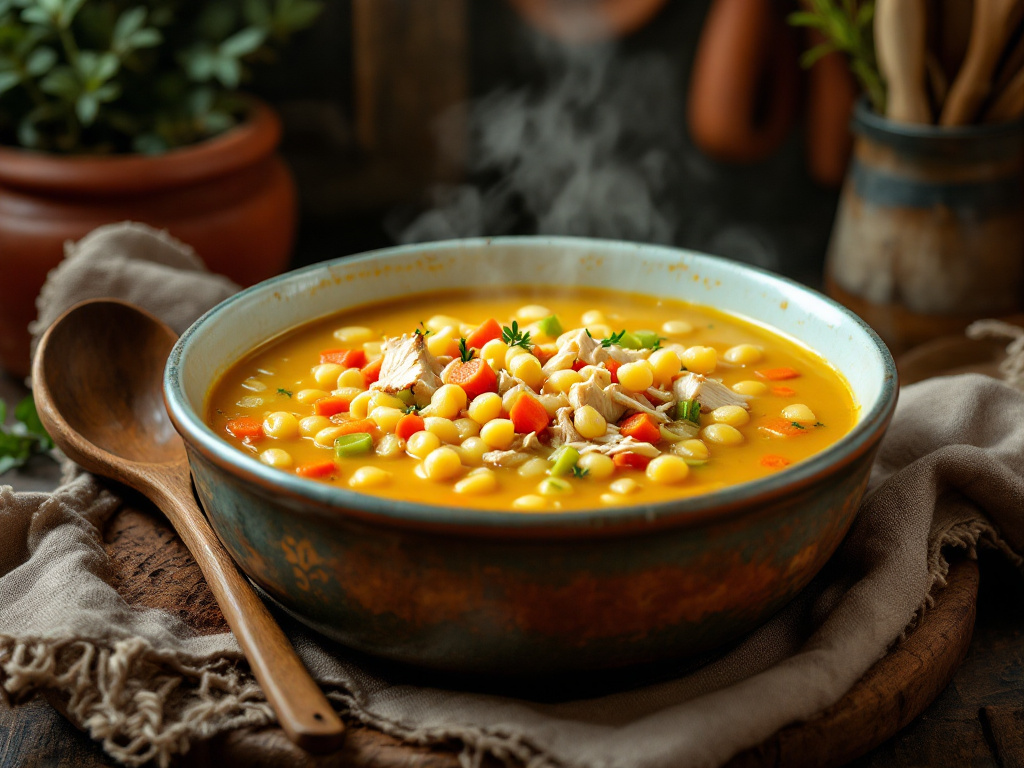
Italian Penicillin Soup is a hearty and aromatic twist on classic chicken noodle soup. It’s called “Penicillin Soup” because of its reputed ability to cure just about anything that ails you. This soup is a blend of vegetables, tiny pasta shapes like pastina or orzo, and a rich broth that’s often enhanced with a Parmesan rind. The soup’s origins can be traced back to Italian grandmothers who would prepare it to nurse their families back to health. For more traditional Italian soup recipes, check out The Mediterranean Dish.
The soup is not only comforting but also incredibly easy to make. It’s a one-pot wonder that comes together in just 30 minutes, making it the perfect weeknight meal. The combination of simple ingredients creates a flavor profile that’s both soothing and satisfying. Whether you’re under the weather or just craving something cozy, this Italian Penicillin Soup Recipe is destined to become your cold-weather favorite. For a vegan adaptation of this classic recipe, visit PlantYou.
The History and Cultural Significance of Italian Penicillin Soup
- Cultural Significance: Italian Penicillin Soup has deep roots in Italian culture, where food is often seen as medicine. The soup’s name is a nod to its perceived healing properties, much like the antibiotic penicillin.
- Tradition: Italian grandmothers, or nonnas, would traditionally prepare this soup to soothe ailing family members, earning it the nickname Italian Nonna’s Soup.
- Family Recipe: The recipe has been passed down through generations, with each family adding its unique touch.
The Magic of Italian Cooking in Italian Penicillin Soup
Italian cooking is renowned for its simplicity and focus on fresh, high-quality ingredients. Italian Penicillin Soup embodies this philosophy, using a handful of simple ingredients to create a deeply satisfying dish. The art of Italian cooking lies in the ability to coax out the natural flavors of each ingredient, allowing them to shine in the finished dish. This soup is a testament to that skill, as it relies on the delicate balance of vegetables, herbs, and broth to create a comforting and nourishing meal.
The Role of Soup in Italian Culture
In Italian culture, soup plays a significant role in family meals and traditions. It is often served as a first course, or primo piatto, and is seen as a way to warm the body and soul. Soups like Italian Penicillin Soup are not only nourishing but also a symbol of love and care. They are often prepared with the intention of healing and comforting, reflecting the importance of family and community in Italian culture.
Ingredients Needed for Italian Penicillin Soup Recipe
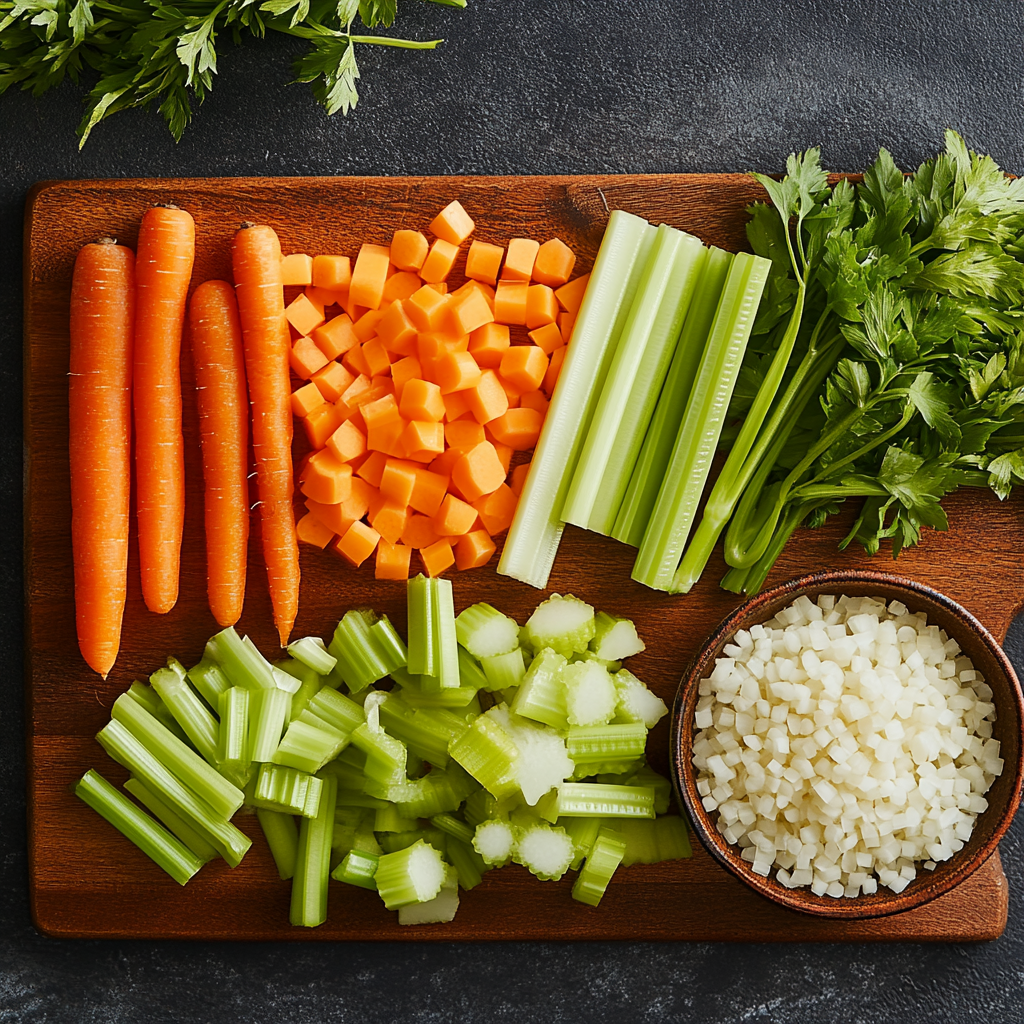
To make Italian Penicillin Soup, you’ll need a few key ingredients:
-
Vegetables:
- Carrots: Rich in beta-carotene, carrots add a slight sweetness and a vibrant color to the soup. They are also high in fiber and vitamins, making them a nutritious addition to the dish.
- Celery: Provides a subtle crunch and a refreshing flavor that balances the soup’s richness. Celery is also low in calories and high in water content, making it a hydrating and low-calorie ingredient.
- Onions: Add depth of flavor and a hint of sweetness when sautéed. Onions are also rich in antioxidants and have anti-inflammatory properties, making them a beneficial addition to the soup.
-
Pasta:
- Pastina: The small size of pastina makes it perfect for soups, as it cooks quickly and is easy to eat. Its star shape adds a charming visual element to the dish.
- Orzo: A rice-shaped pasta that can be used as a substitute for pastina. It has a similar texture and cooking time, making it a suitable alternative.
-
Broth:
- Chicken Broth: Provides a rich, savory base for the soup. You can use store-bought or homemade broth, depending on your preference and available time.
- Vegetable Broth: A great option for vegetarian or vegan versions of the soup. It offers a lighter flavor profile but still provides a comforting base for the dish.
-
Herbs and Spices:
- Parsley: Adds a fresh, mild flavor and a pop of color when used as a garnish. Parsley is also rich in vitamins and antioxidants, making it a nutritious addition to the soup.
- Thyme: Provides a subtle, earthy flavor that complements the other ingredients. Thyme is also known for its potential health benefits, including antimicrobial and antioxidant properties.
- Salt and Pepper: Essential for enhancing the soup’s overall flavor. Adjust to taste, as the amount needed can vary depending on the saltiness of the broth and personal preference.
-
Protein:
- Chicken: Adds a hearty, satisfying element to the soup. You can use cooked, shredded chicken or cook chicken breasts directly in the broth for added flavor.
- Beans or Lentils: Great for vegetarian or vegan versions of the soup. They add protein and fiber, making the dish more filling and nutritious.
The Importance of Quality Ingredients in Italian Penicillin Soup

The quality of the ingredients used in Italian Penicillin Soup can significantly impact the final dish’s flavor and nutritional value. Using fresh, high-quality vegetables and herbs can enhance the soup’s taste and provide more beneficial nutrients. Similarly, using a flavorful broth and quality pasta can elevate the dish from ordinary to extraordinary.
Substitutions and Variations for Italian Penicillin Soup
While the traditional Italian Penicillin Soup recipe calls for specific ingredients, there are plenty of opportunities for substitutions and variations. For example, you can use different types of pasta, such as ditalini or stelline, in place of pastina. You can also experiment with different herbs and spices, such as rosemary or oregano, to change the soup’s flavor profile. Additionally, you can add different proteins, such as turkey or sausage, to create a unique and satisfying dish.
Step-by-Step Recipe for Italian Penicillin Soup

Here’s a simple step-by-step guide to making Italian Penicillin Soup:
-
Sauté the Vegetables:
- In a large pot, heat olive oil over medium heat. Add the diced carrots, celery, and onions. Sauté until the vegetables are softened, about 5-7 minutes. This step helps to develop the soup’s flavor base and ensures that the vegetables are tender and sweet.
-
Add the Broth:
- Pour in the chicken or vegetable broth and bring to a boil. If using a Parmesan rind, add it to the pot now. Reduce the heat to low and let the broth simmer for about 20 minutes. This allows the flavors to meld together and creates a rich and comforting base for the soup.
-
Blend the Vegetables:
- Once the vegetables are soft, use a slotted spoon to remove them from the pot. Transfer them to a blender, along with a little bit of the broth. Blend until smooth, then return the mixture to the pot. This step gives the soup a thick, creamy texture without the need for cream or flour. It also helps to incorporate the vegetables’ flavors and nutrients more fully into the dish.
-
Cook the Pasta:
- Add the pastina or your choice of pasta to the pot. Cook according to the package instructions until al dente. Stir occasionally to prevent the pasta from sticking to the bottom of the pot. Cooking the pasta directly in the broth allows it to absorb the soup’s flavors, enhancing the overall taste of the dish.
-
Season:
- Stir in the fresh herbs, salt, and pepper. Taste the soup and adjust the seasoning as needed. If you prefer a spicier soup, add a chili or two while simmering the broth. The seasoning process is crucial for bringing out the best flavors in the soup and ensuring that it is well-balanced and delicious.
-
Serve:
- Ladle the soup into bowls. Garnish with grated Parmesan cheese and fresh parsley. Serve immediately, while the soup is hot. Presenting the soup in an appealing manner can enhance the dining experience and make the meal more enjoyable.
Tips for Perfect Execution of Italian Penicillin Soup
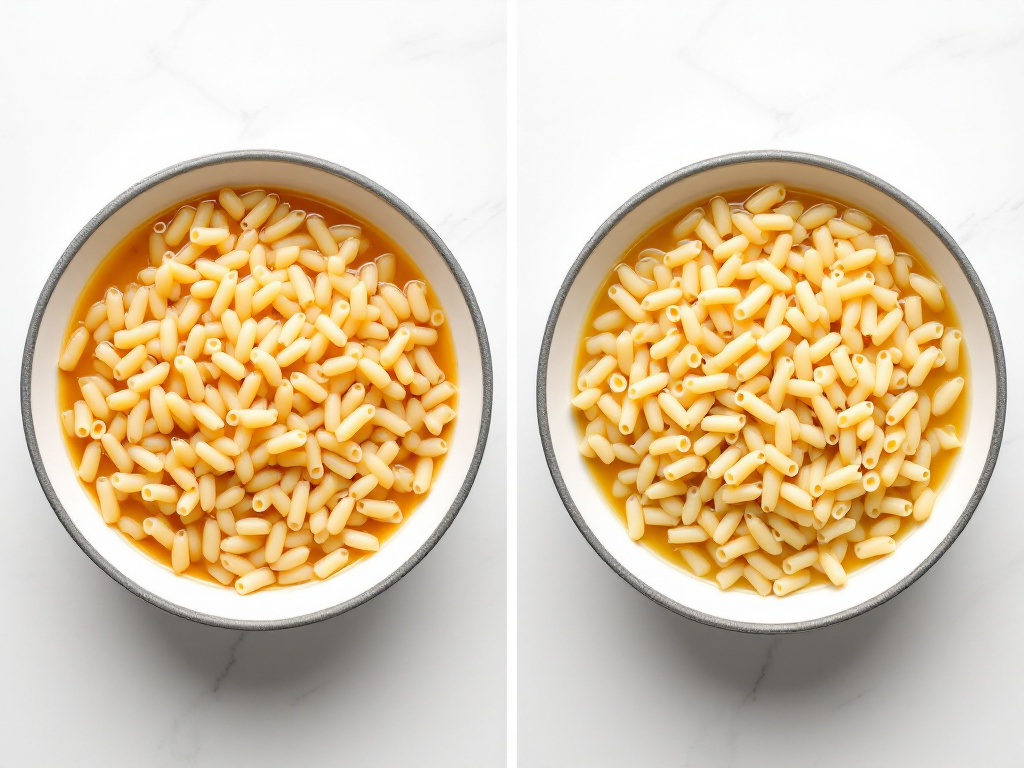
-
Cooking the Pasta Separately: If you prefer your pasta to have a firmer texture, consider cooking it separately and adding it to the soup just before serving. This prevents the pasta from absorbing too much broth and becoming mushy. Cooking the pasta separately also allows you to better control the texture and doneness of the pasta.
-
Using an Immersion Blender: If you have an immersion blender, you can blend the vegetables directly in the pot. This saves time and reduces the number of dishes to wash. Using an immersion blender also allows you to better control the consistency of the soup, as you can blend it to your desired smoothness.
-
Adding a Parmesan Rind: A Parmesan rind adds a rich, umami flavor to the soup. If you don’t have one, you can add a tablespoon of grated Parmesan cheese to the broth instead. The Parmesan rind’s flavor comes from the concentrated umami compounds in the cheese, which are released into the broth as it simmers.
The Art of Simmering in Italian Penicillin Soup

Simmering is a crucial step in the soup-making process, as it allows the flavors to meld together and creates a rich and comforting base for the dish. To simmer the soup effectively, reduce the heat to low and let the broth cook gently for an extended period. This slow and steady cooking process helps to extract the flavors from the vegetables, herbs, and other ingredients, resulting in a deeply satisfying and delicious soup.
Nutritional Information for Italian Penicillin Soup
Italian Penicillin Soup is not only delicious but also packed with nutrients. Here’s a breakdown of its nutritional content:
- Calories: Approximately 142 kcal per serving. This can vary depending on the ingredients used and the serving size. The calories in the soup come mainly from the pasta, vegetables, and any added protein.
- Carbohydrates: 14g, including 2g of fiber and 4g of sugar. The carbohydrates come mainly from the pasta and vegetables, which provide energy and essential nutrients.
- Protein: 10g, which can be increased by adding chicken or beans. Protein is essential for building and repairing tissues in the body, as well as supporting immune function.
- Fat: 6g, with 2g of saturated fat. The fat content comes mainly from the olive oil and Parmesan cheese, which provide flavor and richness to the soup.
- Vitamins and Minerals: Rich in Vitamin A, Vitamin C, calcium, and iron. These nutrients support immune function, bone health, and overall well-being.
Health Benefits of Key Ingredients in Italian Penicillin Soup
- Carrots: High in beta-carotene, which the body converts into Vitamin A. Vitamin A is essential for maintaining good vision and supporting the immune system. Carrots are also a good source of fiber, which aids in digestion and promotes feelings of fullness.
- Celery: Contains antioxidants and beneficial enzymes, as well as potassium and vitamin K. It also has a high water content, which can help keep you hydrated. The antioxidants in celery can help to protect cells from damage and reduce inflammation in the body.
- Onions: Rich in antioxidants and sulfur-containing compounds, which may have anti-inflammatory and immune-boosting properties. Onions are also a good source of vitamin C, which supports immune function and collagen production.
- Garlic: Known for its antibacterial and antiviral properties. It also contains compounds that may help lower blood pressure and cholesterol levels. Garlic’s pungent flavor comes from the sulfur-containing compounds, which are released when the garlic is crushed or chopped.
- Herbs: Fresh herbs like parsley and thyme contain vitamins and antioxidants that can support overall health. Parsley is rich in vitamin K, which is essential for blood clotting and bone health. Thyme contains compounds that may have antimicrobial and antioxidant properties.
The Power of Antioxidants in Italian Penicillin Soup
Antioxidants are compounds that help to protect cells from damage caused by harmful molecules called free radicals. The vegetables and herbs in Italian Penicillin Soup are rich in antioxidants, which can help to support overall health and reduce the risk of chronic diseases. Consuming a diet rich in antioxidants can also help to boost immune function and promote healthy aging.
Variations of the Italian Penicillin Soup Recipe
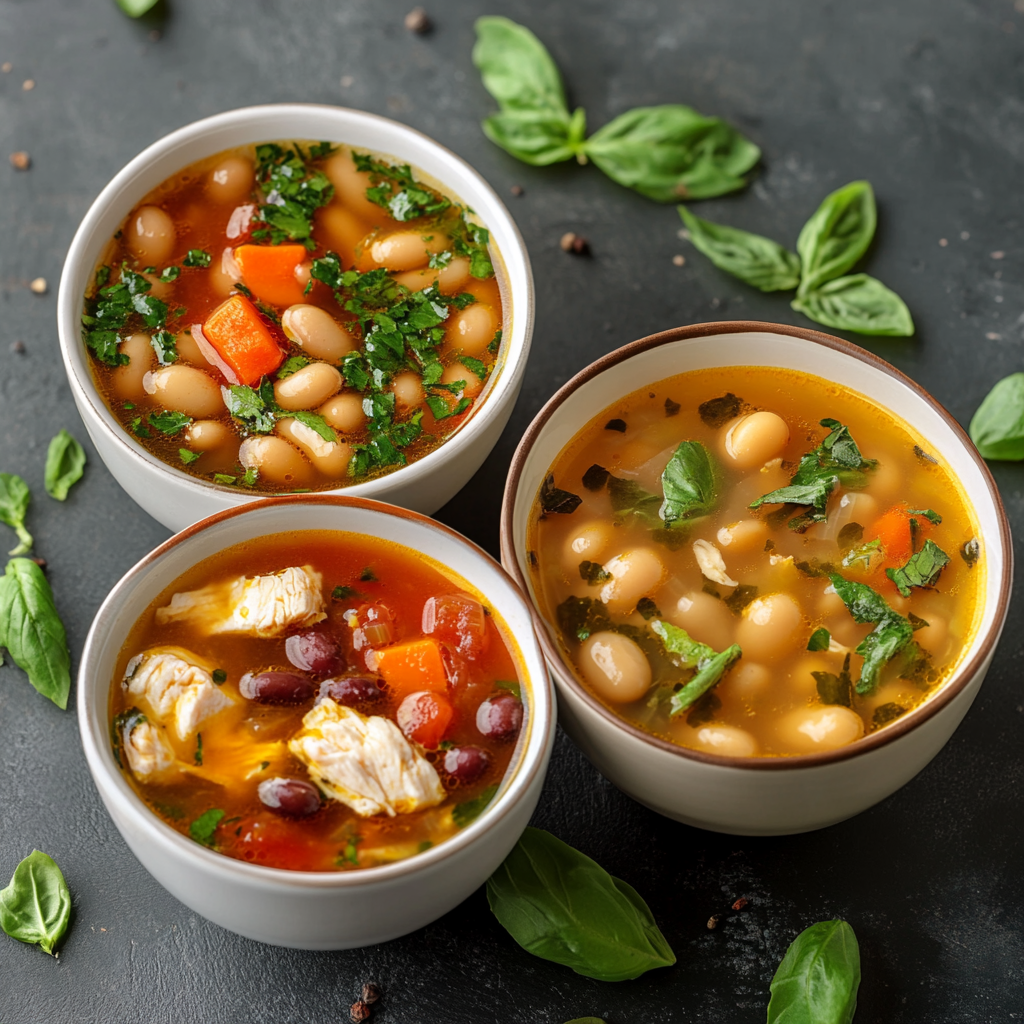
The beauty of Italian Penicillin Soup is its versatility. Here are a few variations to try:
- Vegan Version: Use vegetable broth instead of chicken broth. Omit the Parmesan rind and cheese, or use nutritional yeast for a cheesy flavor. Add beans or lentils for protein. This variation is perfect for those following a plant-based diet or looking to reduce their consumption of animal products.
- Protein-Packed: Add cooked chicken, beans, or lentils to the soup for extra protein. This can make the soup more filling and satisfying, as well as providing additional nutrients. Adding protein to the soup can also help to balance blood sugar levels and promote feelings of fullness.
- Spicy Kick: For a spicier soup, add a chili or two while simmering the broth. You can also add a pinch of red pepper flakes for a subtle kick. The spiciness of the soup can help to clear the sinuses and add an extra layer of warmth and comfort.
- Creamy Version: For a creamier soup, stir in a splash of heavy cream or a dollop of Greek yogurt before serving. This can add a luxurious and indulgent touch to the dish, as well as providing additional calcium and protein.
Regional Variations of Italian Penicillin Soup
- Northern Italy: In the northern regions of Italy, the soup might be made with a stronger chicken broth and more robust herbs like rosemary. The climate in the north is cooler, and heartier ingredients are often used to warm the body and soul.
- Southern Italy: In the south, the soup might include more vegetables, such as zucchini or spinach, and be seasoned with oregano. The warmer climate in the south allows for a greater variety of fresh produce, which is often incorporated into dishes.
- Coastal Regions: Along the coast, seafood like shrimp or clams might be added to the soup for a unique twist. The proximity to the sea allows for easy access to fresh seafood, which is often featured in coastal cuisine.
Seasonal Variations of Italian Penicillin Soup
- Spring: In the spring, you can add fresh peas or asparagus to the soup for a touch of seasonal flavor. These vegetables are at their peak in the spring and can add a vibrant and refreshing element to the dish.
- Summer: In the summer, you can add fresh tomatoes or zucchini to the soup for a lighter and more refreshing flavor. These vegetables are abundant in the summer and can add a touch of brightness to the dish.
- Fall: In the fall, you can add hearty vegetables like butternut squash or sweet potatoes to the soup for a warm and comforting touch. These vegetables are in season in the fall and can add a rich and satisfying element to the dish.
- Winter: In the winter, you can add root vegetables like turnips or parsnips to the soup for a hearty and warming touch. These vegetables are in season in the winter and can add a comforting and nourishing element to the dish.
Serving Suggestions for Italian Penicillin Soup
Italian Penicillin Soup is a meal in itself, but you can elevate it with these serving suggestions:
- Bread: Serve with crusty bread or garlic bread for dipping. The bread can help soak up the delicious broth and add a satisfying crunch. You can also use the bread to sop up any remaining broth in the bowl, ensuring that none of the flavorful liquid goes to waste.
- Salad: Pair with a simple green salad for a balanced meal. The salad can provide a refreshing contrast to the warm, comforting soup. You can also use the salad to add extra nutrients and fiber to the meal, making it more satisfying and nourishing.
- Garnishes: Top with grated Parmesan cheese, fresh parsley, or a drizzle of olive oil. These garnishes can enhance the soup’s flavor and presentation. Adding a sprinkle of fresh herbs or a drizzle of olive oil can also add a touch of elegance to the dish, making it more appealing to the eye.
- Beverages: Serve with a glass of red wine or a warm cup of tea for a cozy meal. The red wine can complement the flavors in the soup and add a touch of indulgence to the meal. The warm tea can provide a soothing and comforting element, making the meal even more relaxing.
Presentation Tips for Italian Penicillin Soup
- Bowls: Serve the soup in deep bowls to contain the broth and pasta. Using deep bowls can also help to keep the soup warm for a longer period, ensuring that it stays hot and comforting throughout the meal.
- Garnishes: Add a sprinkle of fresh herbs or a drizzle of olive oil for a pop of color and flavor. Garnishes can also add a touch of elegance to the dish, making it more visually appealing and enjoyable to eat.
- Table Setting: Set the table with a cozy blanket or tablecloth to create a warm and inviting atmosphere. You can also use candles or soft lighting to enhance the ambiance and make the meal more relaxing and enjoyable.
Creating a Cozy Atmosphere for Italian Penicillin Soup
Creating a cozy atmosphere can enhance the dining experience and make the meal more enjoyable. You can achieve this by using soft lighting, warm colors, and comfortable seating. Adding personal touches, such as family photos or decorative items, can also make the space more inviting and welcoming. Additionally, playing soft music or lighting scented candles can add a touch of relaxation and tranquility to the atmosphere.
Storage and Reheating for Italian Penicillin Soup
To store leftovers, let the soup cool to room temperature and then transfer it to an airtight container. It will keep in the refrigerator for up to 5 days. To reheat, warm the soup on the stovetop over medium heat until heated through. You can also freeze the soup for up to 3 months.
Freezing Tips for Italian Penicillin Soup
- Portion Size: Freeze the soup in individual portions for easy reheating. This can be especially helpful for meal prepping and ensuring that you have a comforting and nourishing meal on hand at all times.
- Thawing: Thaw the soup overnight in the refrigerator before reheating. This helps to maintain the soup’s texture and flavor, ensuring that it tastes just as delicious as the day it was made.
- Reheating: Reheat the soup on the stovetop over medium heat, stirring occasionally. You may need to add a little water or broth to thin the soup, as it can thicken during freezing. Adding water or broth can also help to restore the soup’s original consistency and prevent it from becoming too thick or gloppy.
Meal Prepping with Italian Penicillin Soup
Italian Penicillin Soup is an excellent dish for meal prepping, as it can be made in advance and stored in the refrigerator or freezer. To meal prep the soup, make a large batch and portion it out into individual containers. Store the containers in the refrigerator or freezer, and reheat them as needed throughout the week. Meal prepping the soup can save you time and effort during the week, ensuring that you have a comforting and nourishing meal on hand at all times.
Health Benefits of Italian Penicillin Soup
Italian Penicillin Soup is more than just a comfort food; it’s a nutritional powerhouse. The combination of vegetables, herbs, and broth provides a boost of vitamins and minerals that can help support your immune system. The soup’s warm and soothing nature can also help alleviate cold and flu symptoms.
Immune-Boosting Properties of Italian Penicillin Soup
- Vitamin C: The vegetables in the soup are rich in Vitamin C, which is essential for immune function. Vitamin C helps to protect cells from damage and supports the production of white blood cells, which are crucial for fighting off infections.
- Antioxidants: The soup contains antioxidants from the vegetables and herbs, which can help to neutralize harmful free radicals in the body. Free radicals are unstable molecules that can damage cells and contribute to the development of chronic diseases.
- Hydration: The broth in the soup can help to keep you hydrated, which is important for overall health and immune function. Staying hydrated can help to flush out toxins and support the proper functioning of the body’s systems.
Comparison with Other Comfort Foods
- Chicken Noodle Soup: While both soups are comforting and nourishing, Italian Penicillin Soup stands out due to its use of blended vegetables and pastina. This gives it a unique texture and flavor profile that sets it apart from traditional chicken noodle soup.
- Tomato Soup: Tomato soup is another comfort food classic, but it lacks the variety of vegetables and the immune-boosting properties of Italian Penicillin Soup. Tomato soup is typically made with tomatoes, broth, and cream, which can make it higher in calories and fat.
- Mac and Cheese: While mac and cheese is a comforting dish, it is often high in calories and fat and lacks the nutritional benefits of Italian Penicillin Soup. Mac and cheese is typically made with pasta, cheese, and cream, which can make it a heavier and more indulgent meal.
The Role of Hydration in Italian Penicillin Soup
Staying hydrated is essential for overall health and well-being. The broth in Italian Penicillin Soup can help to keep you hydrated, which is important for supporting immune function and maintaining the proper functioning of the body’s systems. Hydration can also help to flush out toxins and support digestion, making it an essential component of a healthy diet.
FAQs about Italian Penicillin Soup
-
What makes Italian Penicillin Soup different from other chicken soups?
- Italian Penicillin Soup stands out due to its use of blended vegetables, which creates a thick and hearty broth. The addition of pastina and a Parmesan rind also gives it a unique flavor profile. The soup is known for its healing properties and is often served to those who are feeling under the weather.
-
Can I make this soup ahead of time?
- Yes, you can make the soup ahead of time and store it in the refrigerator or freezer. Just be aware that the pasta may absorb some of the broth and become softer upon reheating. To prevent this, you can cook the pasta separately and add it to the soup just before serving.
-
Is this soup suitable for vegetarians or vegans?
- Yes, you can easily adapt the recipe to be vegetarian or vegan. Use vegetable broth instead of chicken broth and omit the Parmesan rind and cheese. Add beans or lentils for protein and nutritional yeast for a cheesy flavor.
-
How can I make the soup more flavorful?
- To enhance the soup’s flavor, consider adding more herbs, a Parmesan rind, or a splash of white wine while simmering the broth. You can also sauté the vegetables in butter instead of olive oil for a richer flavor. Experimenting with different herbs and spices can also add depth and complexity to the soup’s flavor profile.
-
Can I use different types of pasta?
- Yes, you can use any small pasta shape in place of pastina. Orzo, mini shells, and alphabet pasta are all great substitutes. Just be sure to adjust the cooking time according to the package instructions. Using different types of pasta can also add variety and interest to the dish, making it more enjoyable to eat.
-
What is the best way to store leftovers?
- To store leftovers, let the soup cool to room temperature and then transfer it to an airtight container. It will keep in the refrigerator for up to 5 days. You can also freeze the soup for up to 3 months. Storing the soup properly can help to maintain its freshness and flavor, ensuring that it tastes just as delicious as the day it was made.
-
Can I freeze the soup?
- Yes, you can freeze the soup for up to 3 months. Freeze it in individual portions for easy reheating. Thaw the soup overnight in the refrigerator before reheating on the stovetop. Freezing the soup can be a convenient way to have a comforting and nourishing meal on hand at all times.
-
What can I serve with the soup?
- Italian Penicillin Soup pairs well with crusty bread or garlic bread for dipping. You can also serve it with a simple green salad for a balanced meal. Garnish the soup with grated Parmesan cheese and fresh parsley for added flavor and visual appeal.
-
Can I make the soup in a slow cooker?
- Yes, you can make the soup in a slow cooker. Sauté the vegetables in a separate pan, then transfer them to the slow cooker. Add the broth, herbs, and spices, and cook on low for 6-8 hours. Add the pasta during the last 30 minutes of cooking. Using a slow cooker can be a convenient way to make the soup, as it allows you to set it and forget it while it cooks.
-
What is the best way to reheat the soup?
- To reheat the soup, warm it on the stovetop over medium heat until heated through. You may need to add a little water or broth to thin the soup, as it can thicken during storage. Reheating the soup on the stovetop can help to maintain its flavor and texture, ensuring that it tastes just as delicious as the day it was made.
This comprehensive guide to Italian Penicillin Soup should provide you with everything you need to know to create a comforting and delicious meal. Whether you’re feeling under the weather or just craving something cozy, this soup is sure to hit the spot. Buon appetito!
For more delicious soup recipes, check out our Epicurian Recipes and Easy Crab Soup Recipe.